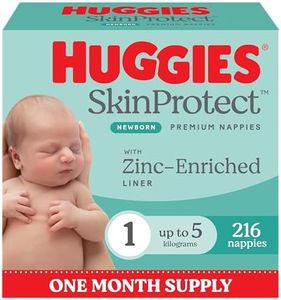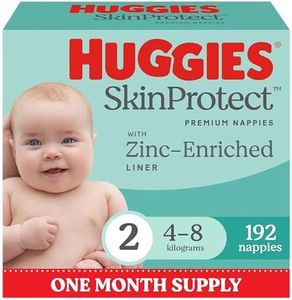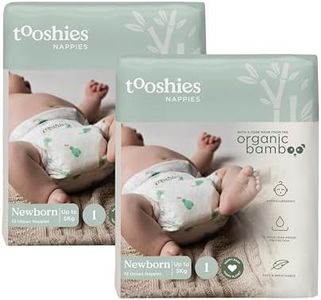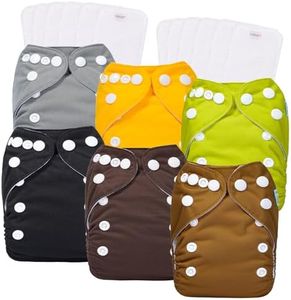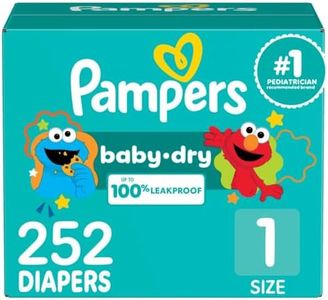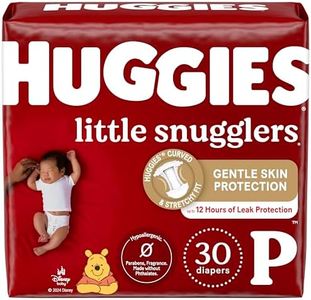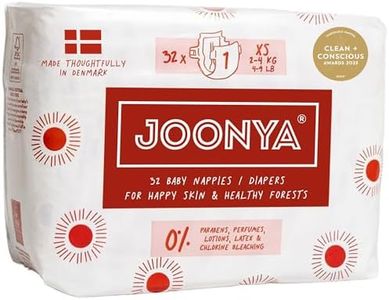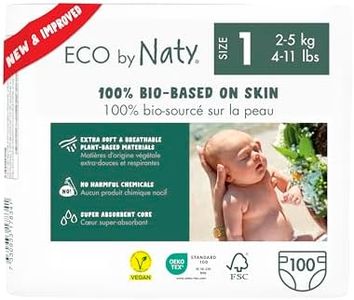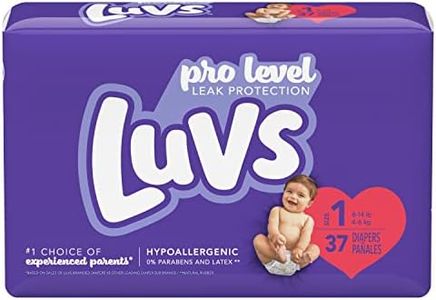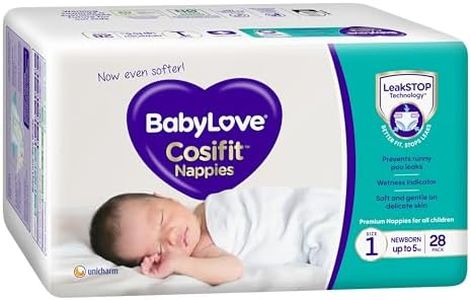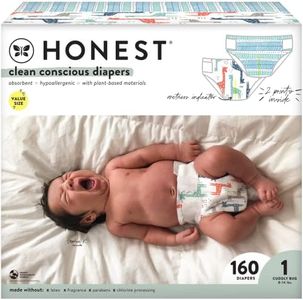We Use CookiesWe use cookies to enhance the security, performance,
functionality and for analytical and promotional activities. By continuing to browse this site you
are agreeing to our privacy policy
10 Best Newborn Diapers
From leading brands and best sellers available on the web.Buying Guide for the Best Newborn Diapers
Choosing newborn diapers can feel overwhelming, especially since your baby's comfort and skin health are at stake. The right diaper provides a good balance between absorbency, fit, and breathability, all while ensuring that it doesn’t irritate sensitive skin. Understanding the key factors can help you make a confident choice and keep your baby happy and dry.AbsorbencyAbsorbency refers to how well a diaper can pull moisture away from your newborn's skin and lock it in, protecting them from wetness and potential irritation. Diapers with high absorbency levels keep your baby's skin drier for longer, reducing the risk of diaper rash. Most diapers are designed to last for a few hours, but you may find variations: some offer overnight protection for extended dryness, while others are best for frequent changing. Assess how often your newborn tends to wet their diaper—if it’s very frequent, opt for standard absorbency, but if you want to avoid changing at night, look for options with higher absorbency.
Fit and SizeFit and size are all about how snugly the diaper wraps around your baby without being too tight or too loose. A good fit prevents leaks and ensures comfort, while the correct size avoids marks on your baby's delicate skin. Newborn diapers are typically sized by weight range, so it’s important to know your baby’s weight to choose accordingly. If your baby is at the lower end of the range, pick the smaller size; if close to the upper limit or above average weight, consider the next size up for better comfort and protection.
Material and Skin SensitivityMaterial quality impacts both comfort and the likelihood of skin irritation. Most diapers are made from a blend of synthetic and natural fibers, but some offer hypoallergenic options and use fewer chemicals and fragrances, ideal for babies with extra sensitive skin. If your newborn has shown any signs of rashes or allergies, look for diapers labeled as sensitive or hypoallergenic, and those made with minimal or natural materials.
Wetness IndicatorA wetness indicator is a line or design that changes color when the diaper is wet, making it easy for caregivers to see when it’s time for a change without opening the diaper. This is especially helpful for newborns who may not always show obvious signs of discomfort. If you appreciate convenience and avoiding unnecessary changes, look for diapers that include this feature.
Tabs and FastenersTabs and fasteners are the parts of the diaper that allow you to secure it around your baby’s waist. Good fasteners should be easy to use, secure, and allow for adjustments so the diaper stays snug as your baby wiggles. Some tabs stick and unstick multiple times, which is useful for checking fit or changing position. If you want fuss-free changes and a flexible fit, choose diapers with strong, adjustable fasteners.
BreathabilityBreathability refers to how well air can flow through the diaper material while still preventing leaks. Good breathability keeps your baby’s skin cooler and drier, helping to reduce the risk of rashes. Some diapers prioritize this more than others; consider this spec especially if you live in a warm climate or notice your baby’s skin sweats easily. For most newborns, a breathable diaper strikes a nice balance between leak protection and skin comfort.
